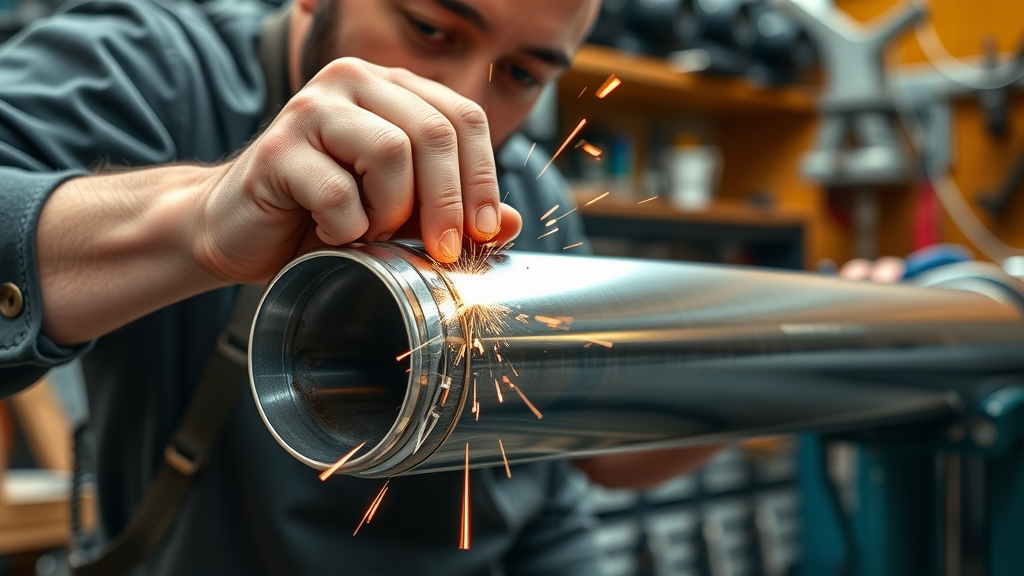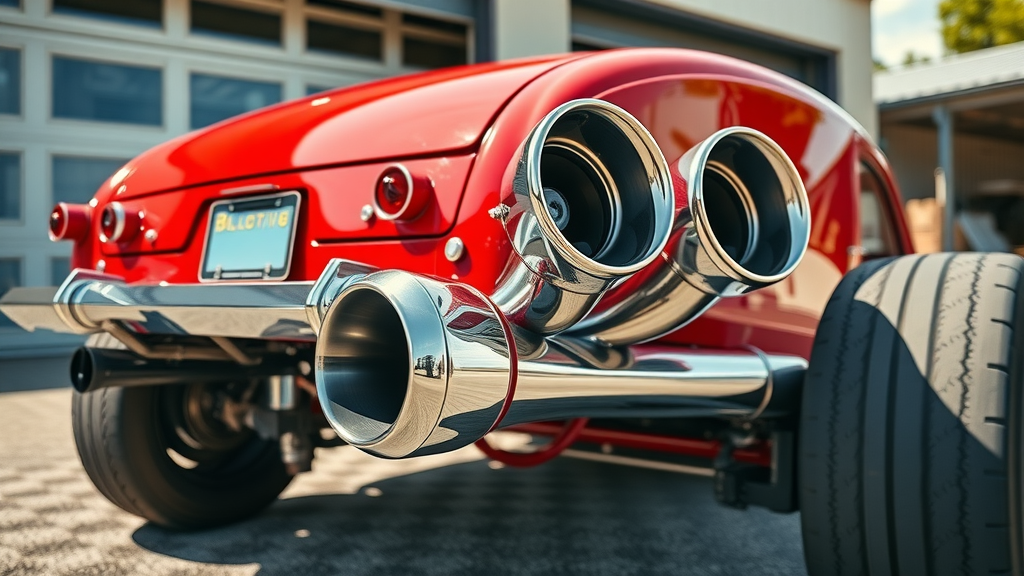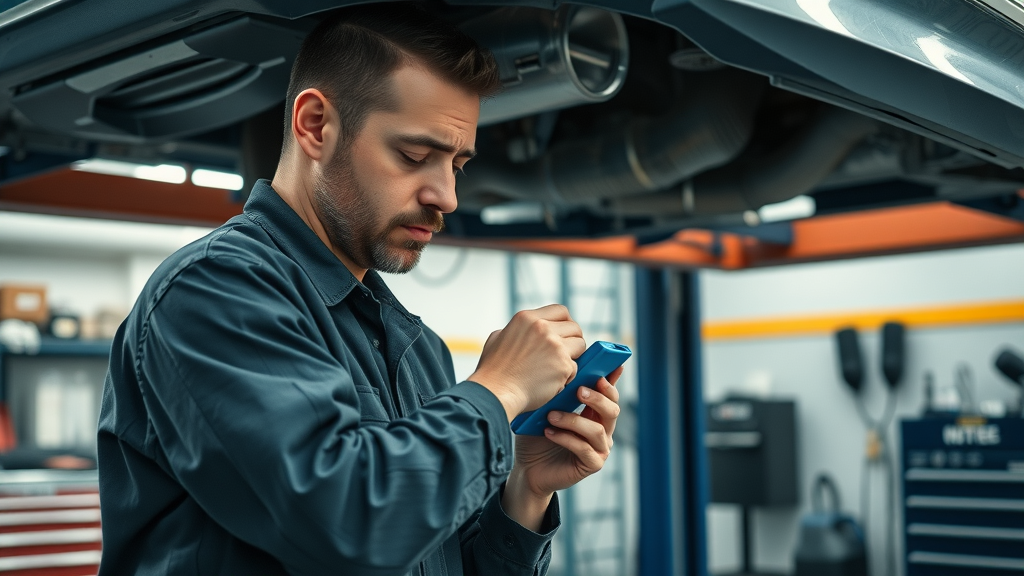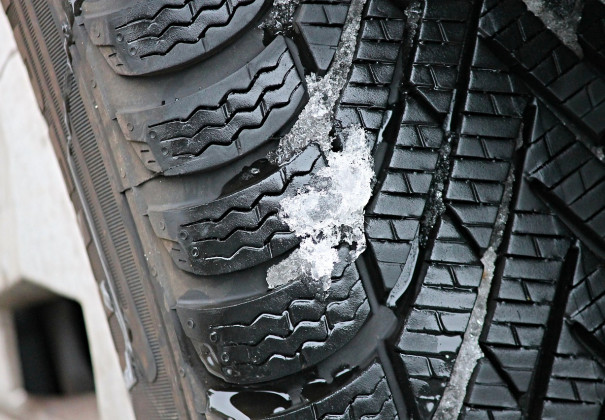Did you know that nearly 40% of vintage car restorers face challenges finding suitable aftermarket exhaust parts? This startling fact highlights the critical role of custom exhaust systems in maintaining the performance and aesthetic appeal of classic and hot rod vehicles. As automotive enthusiasts strive to preserve authenticity and maximize engine efficiency, the demand for custom exhaust solutions continues to surge.
In this article, we dive deep into custom exhaust expert insights , uncovering key facts, expert perspectives from Frank Wiebe of 3D Auto, and actionable advice on navigating the niche market of custom exhaust fabrication. Whether you’re a seasoned restorer or a passionate hot rod builder, understanding the nuances of exhaust repair, materials, and upgrades is essential to achieving optimal vehicle performance and style.
Startling Facts About Custom Exhaust Systems in the Automotive Industry

The popularity of custom exhaust systems has grown dramatically within the automotive aftermarket, particularly in hot rod and classic car communities. Statistics reveal that a significant portion of vehicles built or restored require specialized exhaust components that standard aftermarket parts simply cannot provide.
Custom exhaust systems not only enhance engine performance but also contribute significantly to the vehicle’s unique sound and visual appeal. Due to the scarcity of tailored parts for aging or highly customized vehicles, fabrication experts like Frank Wiebe have become invaluable resources in the industry, addressing both repair needs and innovative exhaust designs.
What You'll Learn
- The critical role of custom exhaust systems in vehicle performance and aesthetics
- Differences between stainless steel and traditional exhaust materials
- Cost considerations and system upgrades for custom exhausts
- Expert insights from Frank Wiebe on exhaust repair and custom pipe bending
- Common misconceptions and best practices in exhaust system upgrades
Overview of Custom Exhaust Systems and Their Importance

Custom exhaust systems serve as essential components in preserving and enhancing the performance characteristics of unique vehicles, especially hot rods and classic cars. Standard mass-produced exhausts often fail to accommodate the specific spatial and acoustic requirements of these vehicles. Customized fabrication enables precise adjustments to fit confined spaces while optimizing exhaust flow.
Frank Wiebe, an expert from 3D Auto, emphasizes that the restoration and customization market thrives on these tailored solutions. "When building something custom, there’s simply no off-the-shelf exhaust that fits perfectly," Wiebe explains. “Finding a muffler that fits your layout and then fabricating the pipes accordingly is key to both performance and style.”
When considering custom exhaust upgrades, it's also important to factor in how these changes can impact your vehicle's overall safety and compliance. For a deeper understanding of related maintenance costs and how exhaust repairs fit into broader vehicle care, you may find this guide on brake repair and maintenance costs particularly useful.
The Role of Exhaust Repair in Maintaining Vehicle Performance
Effective exhaust repair is fundamental to sustaining a vehicle's peak performance and longevity. Components such as pipes and mufflers endure constant exposure to heat, moisture, and corrosive elements, which accelerate degradation—especially in classic and older models with traditional materials. Timely repairs prevent exhaust leaks, enhance fuel efficiency, and ensure regulatory compliance regarding emissions.
Frank Wiebe describes a common scenario where "stuff still rots out and connections rot through," requiring expert attention rather than simple part replacement. These repairs often involve custom pipe bending and welding tailored to the vehicle’s unique configuration, which preserves both engine output and the car’s authentic look.
Understanding Exhaust System Upgrades: Materials and Techniques
Frank Wiebe of 3D Auto states, “Stainless pipe is twice as much money, but it would last 15 to 20 years, making it a worthwhile investment for many customers.”
Pipe Bending Methods: Mandrel Bend vs. Standard Bending

Choosing the right pipe bending method is crucial when upgrading custom exhausts. The primary techniques include standard bending and mandrel bending . Standard bending compresses the pipe radius, often causing minor kinks, affecting visual appeal but usually not restricting exhaust flow. Mandrel bending uses an internal mandrel to maintain pipe diameter throughout the bend, providing a smoother curve and better aesthetics, but requires expensive specialized machinery.
Frank Wiebe explains, “I don’t offer mandrel bends because of the high cost of the machinery, but the flow isn’t restricted by standard bending; it’s mostly a visual preference.” This insight is critical for enthusiasts balancing cost, durability, and performance in their custom exhaust projects.
Cost Analysis and Value of Custom Exhaust Systems
| Service Type | Typical Cost | Aftermarket Cost Comparison | Longevity |
|---|---|---|---|
| Custom Pipe Bending (Standard) | $350 | $600+ | 5-10 years |
| Custom Pipe Bending (Stainless Steel) | Approx. 2x standard cost | N/A | 15-20 years |
| Mandrel Bend (Specialized) | High cost due to equipment | N/A | Visual appeal focused |
System Upgrades: When and Why to Consider Them

Upgrading your exhaust system is often prompted by a combination of performance desires and aesthetic goals. Vehicles exhibiting corrosion, restricted flow, or outdated configurations benefit greatly from custom upgrades. Moreover, custom exhausts allow integration of modern materials like stainless steel that extend life span and improve resistance against rust.
Frank Wiebe highlights that custom upgrades are especially important for older or unique vehicles lacking aftermarket parts. “Those who rebuild classics or hot rods often require a completely custom pipe layout — this is when expertise and quality materials make the difference.” As such, investing in upgrades not only revitalizes performance but also enhances the vehicle’s sound profile and overall value.
Expert Insights & Best Practices from Frank Wiebe
Frank Wiebe shares, “My goal is to do more stainless than anything because it offers the best longevity, even if it’s a bit trickier to bend.”
Common Mistakes and Misconceptions in Custom Exhaust Work

A frequent misconception among car enthusiasts is that only mandrel bending ensures proper exhaust flow. While mandrel bending does offer aesthetic advantages and smooth curves, Frank Wiebe clarifies that standard bending does not significantly impair performance. New builders sometimes overestimate costs or avoid stainless steel due to its bending challenges, missing out on its longevity benefits.
Another notable mistake is neglecting the compatibility between mufflers and pipes during fabrication. Expert custom exhaust fabrication involves precisely fitting mufflers to maximize space and sound quality. Wiebe’s advice is to collaborate with expert fabricators from the planning phase to avoid costly errors that compromise durability or flow.
Actionable Tips for Choosing and Maintaining Custom Exhaust Systems
- Assess your vehicle’s specific needs before choosing materials to ensure the best fit and function.
- Consider long-term durability versus upfront costs; investing in stainless steel pays off over time.
- Work with experienced custom exhaust experts like Frank Wiebe for precise fitting and craftsmanship.
- Regularly inspect your exhaust system for corrosion or damage to prolong vehicle life.
- Understand the benefits and limits of bending techniques to align expectations with performance needs.

People Also Ask
-
What is the cost of a custom exhaust system?
Costs vary widely from $350 for standard custom pipe bending to double that for stainless steel, depending on vehicle specifics and materials. -
How long do stainless steel exhaust systems last?
Stainless steel exhausts typically last 15 to 20 years, making them a durable choice for custom fabrications. -
What is the difference between mandrel bending and standard bending?
Mandrel bending maintains pipe diameter through the bend for a smooth curve and visual appeal, while standard bending may kink slightly but generally does not affect exhaust flow. -
Can custom exhaust systems improve vehicle performance?
Yes, custom exhausts tailored to the vehicle's layout reduce restrictions, improve flow, and enhance both power and sound characteristics. -
When should I consider an exhaust system upgrade?
Consider upgrades when existing exhausts are damaged, corroded, or if you desire improved performance or custom aesthetic enhancements.
Key Takeaways
- Custom exhaust systems are essential for unique or older vehicles without suitable aftermarket options.
- Stainless steel offers superior longevity but at a higher initial cost.
- Standard pipe bending is cost-effective and does not significantly impact performance.
- Expert craftsmanship ensures a proper fit and durable custom exhaust solutions.
- Upgrading your exhaust system can enhance both aesthetics and function, especially in hot rod and classic car restoration.
Conclusion
In the evolving landscape of automotive customization, custom exhaust expert insights from professionals like Frank Wiebe of 3D Auto reveal the nuanced balance between material choice, fabrication technique, and cost considerations that define successful exhaust system solutions. With rising demand among hot rod and classic car communities, investing in expertly crafted, durable exhaust systems—particularly those utilizing stainless steel—ensures vehicles maintain peak performance, distinctive sound, and authentic style for years to come. Whether repairing a vintage hot rod or building a bespoke exhaust layout, understanding these expert insights empowers enthusiasts to make informed decisions that enrich their driving experience and preserve automotive heritage.
If you’re passionate about keeping your classic or custom vehicle in top condition, there’s even more to explore beyond exhaust systems. Understanding the full spectrum of vehicle safety and compliance can help you avoid costly mistakes and ensure your restoration meets all necessary standards. For a comprehensive look at Ontario’s vehicle safety requirements and how they intersect with custom modifications, check out this in-depth resource on Ontario Vehicle Safety Standards Certificates . Expanding your knowledge in this area will empower you to make smarter decisions and elevate your automotive projects to the next level.
 Add Row
Add Row  Add
Add 



Write A Comment